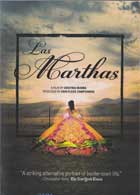
Las Marthas 2013
Distributed by Women Make Movies, 115 W. 29th Street, Suite 1200,New York, NY, 10001; 212-925-0606
Produced by Erin Ploss-Campoamor and Cristina Ibarra
Directed by Cristina Ibarra
DVD, color, 69 min.
Sr. High - General Adult
Adolescence, Multiculturalism
Date Entered: 12/11/2014
Reviewed by Mary Northrup, Metropolitan Community College-Maple Woods, Kansas City, MissouriThis film presents a slice of life from a celebration probably not well known outside Laredo, Texas: the Society of Martha Washington puts on a debutante ball each year, part of a bigger celebration of George Washington’s birthday.
Over the course of the film, viewers watch the girls in various activities: rehearsals that take place months before the ball, a presentation, parade, and the actual pageant and ball. With the behind-the-scenes views of these activities and the lives of the teenage girls, the film provides a fascinating look at an unusual tradition. Along the way, information about how the Society of Martha Washington became an organization dominated by the Hispanic people and culture of the border town of Laredo becomes clear.
The film does a great job of showing the family tradition, with mothers and grandmothers being part of a long line of girls who have applied, are voted on by a committee, and go through what can be at times a grueling process. The girls, mothers, dress designer, and two PhDs (also former debutantes) are featured.
Production values are high, with stunning visuals and good sound. A variety of people may be potential viewers. Some may be interested in the elaborate gowns, which can cost up to $30,000 and weigh 100 pounds. Other viewers may want to learn the history of this ball and the organization, as well as the sociology of the dual nature in the people presented: Anglo/ Mexican, rich/poor, and new/old money. Others may be fascinated by the fact that this ball is different than other debutante balls in that the debs are portraying historical women, for example, Ben Franklin’s daughter.
This film would be a good addition to public library collections, for academic programs covering multicultural issues and women’s issues, and for general discussion.